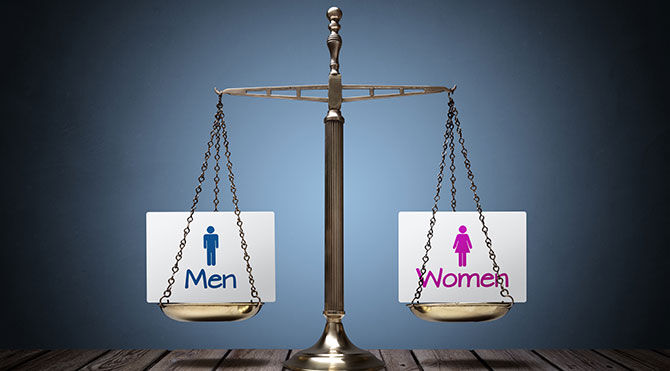Narrowing of gender pay gap ‘not good enough’
The latest ONS report on earnings has shown the gender pay gap is continuing to decrease. On average earnings did increase, however inflation has led to a general decrease in ‘real wages’.

Inflation counters average pay increase
In its annual survey of hours and earnings, based on statistics gathered in April, the ONS found full-time employees earned an average of £550 a week in April, up 2.2 per cent on last year – the joint highest percentage increase since the financial crisis in 2008. However, adjusted for inflation, workers’ earnings decreased 0.4 per cent compared with April last year.On the gender pay gap, the report found that the April difference was down from 9.4 per cent for fulltime workers. Roger Smith, ONS statistician, said, “Higher inflation meant real earnings were down overall on the year for the first time since 2014.“This wasn’t the case for everyone though. The lowest paid 10 per cent of workers and those in some regions like the East Midlands still saw real increases, while other areas saw decreases.”Frances O’Grady, general secretary of the TUC, said, “The fulltime gender pay gap has inched a bit smaller but there is still a chasm between men and women’s earnings. At this rate it’ll take decades for women to get paid the same as men.“The government needs to crank up the pressure on employers. Companies shouldn’t just be made to publish their gender pay gaps. They should be forced to explain how they’ll close them and those bosses who flout the law should be fined.”Related pay gap articles:
- Rise in working women leads to fall in UK jobless rate
- HR ahead of pack on gender pay, but disparities widen
- Talent and technology: creating a modern, mobile workforce
Mixed picture of gender pay gap
Gerwyn Davies, senior labour market analyst at the Chartered Institute of Personnel and Development (CIPD), said the ONS data painted a mixed picture of shifts among pay gaps across the UK and agreed greater action was needed to achieve equality.He said both government and employers should draw lessons from the new figures. “Despite good news on the gender pay gap, the latest figures show that there is much more to do in order to deliver genuine pay equality.“This is particularly true when we consider that relatively few women work fulltime and that women as a whole still tend to be concentrated in low-paid sectors of the economy, especially among the over 30s.“It is clear that the gender pay reporting requirements need to be accompanied by a more analytical review of why the equal pay gap exists in organisations and what practical steps can be taken to tackle it. In many cases, a greater drive to increase uptake of flexible working opportunities from government and employers will be required if we are to make further inroads into the equal pay gap.“As the ONS points out, the gap is relatively small up to the age of 40, which is likely to be connected with patterns of return to work after having children.“The data also gives a political mandate to the Chancellor for taking a more lenient stance on public sector pay given that the annual figures show that the full-time earnings of public sector workers (+0.9 per cent) continue to lag substantially behind those of private sector workers (2.8 per cent).”For related news and features, visit our Human Resources section.Relocate’s new Global Mobility Toolkit provides free information, practical advice and support for HR, global mobility managers and global teams operating overseas. Access hundreds of global services and suppliers in our Online Directory
Access hundreds of global services and suppliers in our Online Directory
©2025 Re:locate magazine, published by Profile Locations, Spray Hill, Hastings Road, Lamberhurst, Kent TN3 8JB. All rights reserved. This publication (or any part thereof) may not be reproduced in any form without the prior written permission of Profile Locations. Profile Locations accepts no liability for the accuracy of the contents or any opinions expressed herein.






































